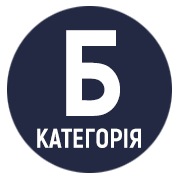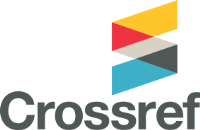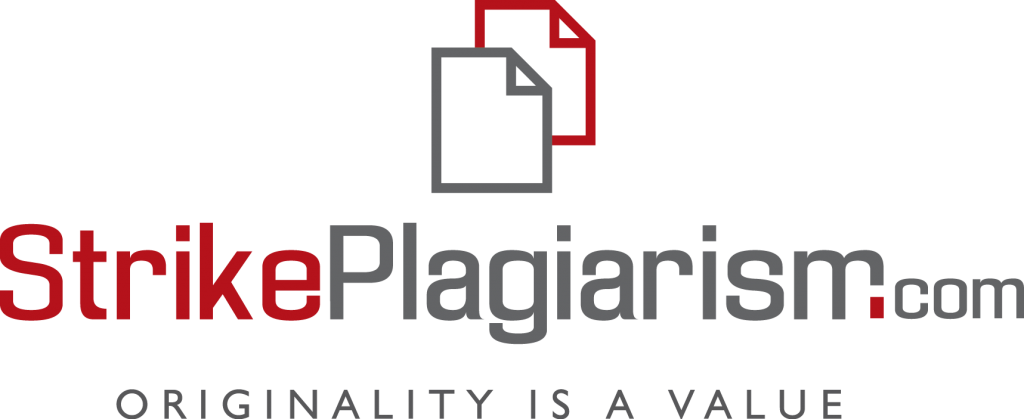EVALUATION OF THE CLINICAL EFFECTIVENESS OF ULTRAPHONOPHORESIS OF A BIOREGULATORY DRUG IN THE COMPREHENSIVE TREATMENT OF MYOFASCIAL PAIN SYNDROME IN PATIENTS WITH DYSFUNCTION OF THE TEMPOROMANDIBIDAL JOINTS
DOI:
https://doi.org/10.32782/3041-1394.2025-1.2Keywords:
myofascial pain syndrome, neurogenic myositis, temporomandibular joint dysfunction, local bioregulatory therapy, ultraphonophoresis, Traumeel CAbstract
Introduction. In patients with musculo-articular dysfunction of the TMJ, spasmodic nodular areas of nodular indurations and fibrous bands are formed in the spasmodic masticatory muscles, in which trigger points are localized, which are capable of spontaneously provoking the appearance of pain syndrome. Effective treatment of myofascial pain syndrome is based on the elimination of general and local etiological factors of this disease, drug and physiotherapeutic effects on its pathophysiological mechanisms. Nonsteroidal anti-inflammatory drugs do not completely stop the inflammatory process in the masticatory muscles, slowly eliminate spasmodic nodes and latent trigger points in spasmodic muscle fibers. To solve this problem, we have proposed the local application of the bioregulatory drug “Traumeel C”. The aim of the study is to assess the clinical effectiveness of ultraphonophoresis of the bioregulatory drug “Traumeel C” in the complex treatment of myofascial pain syndrome in patients with temporomandibular joint dysfunction. Research materials and methods. 35 patients aged 30 to 60 years (18 women and 17 men) with acute manifestations of myofascial pain syndrome in the maxillofacial region on the background of temporomandibular joint dysfunction of varying severity participated in clinical observations. Patients were generally prescribed antistress therapy – the drug “Gamalate B6”, the non-steroidal anti-inflammatory drug “Indomethacin” and the longacting muscle relaxant “Miorix”, relaxing dental splints were made. After the acute manifestations of myofascial pain syndrome were relieved, patients were divided into two clinical groups, depending on the locally applied pharmacological drugs for the treatment of damaged masticatory muscles. In the main group (18 people), daily sessions of ultraphonophoresis of Traumeel C ointment were performed on the areas of spasmodic masticatory muscles and their trigger points. In the comparison group (17 people), sessions of ultraphonophoresis of 10 % Indomethacin ointment were similarly performed. Results. For the first time, the clinical effectiveness of the combined effect of ultrasound and local bioregulatory therapy on the focus of neurogenic inflammation in spasmodic masticatory muscles was studied and compared with the local effect of a nonsteroidal anti-inflammatory drug on this pathological process. On the background of ultraphonophoresis of drugs, there was a gradual regression of local clinical symptoms of reactive myositis of the masticatory muscles. In 15 patients (83,3%) of the main group and in 10 patients (58,8 %) of the comparison group, who had TMJ dysfunction of moderate severity according to the Helkimo M. index, after 5–6 sessions of ultraphonophoresis, a complete reduction of clinical manifestations of the inflammatory process in the masticatory muscles was observed – painful tension disappeared in them, nodular indurations and fibrous bands, trigger points were resolved. In recovering patients, the intensity of noise manifestations of dislocation of the articular disc (clicking, popping) decreased in the temporomandibular joints during movement of the lower jaws. In patients with severe dysfunction of the TMJ, local application of “Traumeel C” is more effective (χ2 – 2,574, р = 0,109) compared to ultraphonophoresis of “Indomethacin” ointment. On the background of local bioregulatory therapy, the treatment of myofascial pain syndrome lasts an average of 6,3 days, with local therapy with a nonsteroidal anti-inflammatory drug – 8,5 days. Conclusions. During the complex treatment of patients with TMJ dysfunction of moderate severity under the influence of ultraphonophoresis of ointments “Traumeel C” and “Indomethacin”, there is a steady regression of local clinical symptoms of the inflammatory process in the masticatory muscles (myositis) in the same terms – after 5–6 sessions of physiotherapy procedures. During the complex treatment of patients with severe TMJ dysfunction, local application of “Traumeel C” is more effective compared to ultraphonophoresis of ointment “Indomethacin” – on average, the treatment period for myofascial pain syndrome in the maxillofacial region is reduced by 2 times.
References
Особливості етіології та патогенезу хвороб скронево-нижньощелепного суглоба, ускладнених дисфункцією жувальних м’язів / І.В. Яценко та ін. Український стоматологічний альманах. 2016. Т. 1. № 3. С. 108–111.
Скронево-нижньощелепні розлади / В.Ф. Макєєв та ін. Львів : Кварт, 2018. 404 с.
Куцевляк В.І., Боян А.М., Любченко О.В. Поширеність і систематизація етіопатогенетичних чинників у розвитку м’язово-суглобової дисфункції скронево-нижньощелепного суглоба. Вісник стоматології. 2020. № 4(113). С. 39–48.
García-dela-Banda-García R., Cortés-Pérez I., Ibancos-Losada MdR. et al. Effectiveness of dry needling versus manual therapy in myofascial temporomandibular disorders: A singleblind randomized controlled trial. Journal of Personalized Medicine. 2023. № 13(9). е1415.
Гулюк С.А., Шнайдер С.А. Клінічна характеристика тригерних зон жувальної мускулатури при міофасціальному больовому синдромі обличчя. Вісник стоматології. 2020. Т. 35. № 1. С. 79–86. DOI: https://doi.org/10.35220/2078-8916-2020-35-1-79-86.
Мокрик О.Я., Гаврильців С.Т., Уштан С.В., Дмитришин Ю.Б. Застосування селективних анестезій для топічної діагностики сенсорних розладів на обличчі й прозопалгії у хворих із дисфункцією скронево-нижньощелепних суглобів. Вісник проблем біології і медицини. 2021. № 4(162). С. 320–324. DOI:10.29254/2077-4214-2021-4-162-320-324.
Uchida T., Iida T., Komiyama O., Kuyama K. Medial Pterygoid Myositis Complicated by Numbness of the Tongue and Nonodontogenic Toothache: A Case Report. Open Journal of Stomatology. 2020. № 10. Р. 241–249. DOI: 10.4236/ojst.2020.109023.
Shah J.P., Thaker N., Heimur J. et al. Myofascial Trigger Points Then and Now: A Historical and Scientific Perspective. Journal of Injury, Function, and Rehabilitation. 2015. № 7(7). Р. 746–761. DOI: 10.1016/j.pmrj.2015.01.024.
Golanska P., Saczuk K., Domarecka M. et al. Temporomandibular Myofascial Pain Syndrome – Aetiology and Biopsychosocial Modulation. A Narrative Review. Int. J. Environ. Res. Public Health. 2021. № 18(15). е7807. DOI:10.3390/ijerph18157807.
Okeson J. Management of Temporomandibular Disorders and Occlusion. Mosby: «Elsevier», 2013. Р. 129.
Simonic-Kocijan S., Uhac I., Tariba P. et al. Alterations in the masseter muscle and plasma IL-6 level following experimentally induced occlusal interference and chronic stress-a study in rats. Coll Antropol. 2012. № 36(2). Р. 651–655.
Pereira Y.CL., Nascimento G.C., Iyomasa D.M. et al. Exodontia-induced muscular hypofunction by itself or associated to chronic stress impairs masseter muscle morphology and its mitochondrial function. Microsc Res Tech. 2019. № 82(5). Р. 530–537. DOI: 10.1002/jemt.23196.
Ayoub S., Berbéri A., Fayyad-Kazan M. Cytokines, Masticatory Muscle Inflammation, and Pain: an Update. J Mol Neurosci. 2020. № 70(5). Р. 790–795. DOI: 10.1007/s12031-020-01491-1.
Kalladka M., Young A., Khan J. Myofascial pain in temporomandibular disorders: Updates on etiopathogenesis and management. Journal of Bodywork and Movement Therapies. 2021. Vol. 28. P. 104–113.
Клименко В.Г. Основні положення патогенетичного біорегуляційного підходу до загальної терапевтичної практики. Біологічна терапія. 2013. № 1. С. 8–11.
Diudina I., Yanishen I., Tomilin V. et. al. Anti homotoxic drugs using in dental practice. Georgian Med News. 2022. № 332. Р. 99–102.
Dustmatov J., Makhkamova F., Akhmedov S. Features of the use of traumeel s in the correction of post-implantation complications. V International Scientific and Theoretical Conference «Current issues of science, prospects and challenges». 2023, November 17. Sydney, Australia. Р. 215–216.
Sadriev N.N., Tilalov H., Toshpolatova K., Baxtiyorov D. Application of the drug «traumel with» u sick with purent- inflammatory diseases maxillofacial area. Сentral Аsian journal of multidisciplinary research and management studies. 2024. Vol. 1, Issue 1. Р. 55–58.
Helkimo M.: Studies on function and dysfnction of the masticatory system.II. Index for anamnestic and clinical dysfunction and occlusal state. Sven Tandlak Tidskr. 1974. № 67(2). Р. 101–121.
Овчаренко О.Ю. Психологія стресу та стресових розладів : навчальний посібник. Київ : Університет «Україна». 2023. 266 с. DOI: 10.36994/978-966-388-665-7-2023-266.
Попович С.В., Іванушко О.В. Траумель С: біорегуляційний підхід до протибольової терапії захворювань хребта і суглобів. Біль. Суглоби. Хребет. 2016. № 3(23). С. 51–56. DOI: 10.22141/2224-1507.3.23.2016.85007.
Сиволап В.Д., Каленський В.Х. Фізіотерапія : практикум для студентів вищих медзакладів. Запоріжжя : ЗДМУ, 2014. 196 с.
Jung-Ha S., Jung-Min L., Jung-Hyun K. The Effectiveness of Ultrasound Deep Heat Therapy for Adhesive Capsulitis: A Systematic Review and Meta-Analysis. Int. J. Environ. Res. Public Health. 2022. № 19(3). 1859 р. DOI: 10.3390/ijerph19031859.
Kalladka M., Young A., Khan J. Myofascial pain in temporomandibular disorders: Updates on etiopathogenesis and management. Journal of Bodywork and Movement Therapies. 2021. Vol. 28. P. 104–113.
Шинчуковський І. Порівняння ефективності зменшення міофаціального болю за допомогою терапії лазером низької інтенсивності та червоним світлодіодним світлом у пацієнтів із дисфункцією скронево-нижньощелепного суглобу. Східноукраїнський медичний журнал. 2024. № 12(2). Р. 271–277. DOI: 10.21272/eumj.2024;12(2):271-277.
Wenyan Li, Junying Wu. Treatment of Temporomandibular Joint Disorders by Ultrashort Wave and Extracorporeal Shock Wave: A Comparative Study. Med Sci Monit. 2020. № 26. Р. 9234611–9234615. doi: 10.12659/MSM.923461.
Muir B., Brown C., Brown T. et al. Immediate changes in temporomandibular joint opening and pain following vibration therapy: a feasibility pilot study. J. Can Chiropr Assoc. 2014. №58(4). Р. 467–480.







